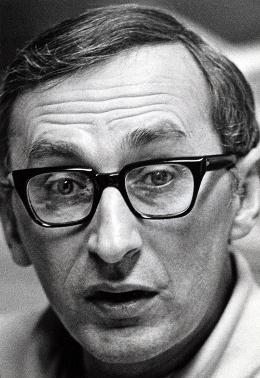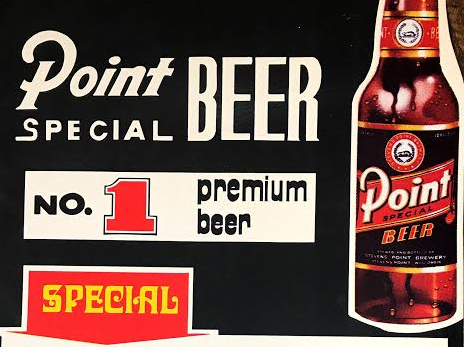Was American beer brewed ‘through a horse’? In 1973, this newspaperman tried to find out.

Mike Royko
In early 1973, Mike Royko was at the top of his game as a newspaper columnist.
Fiendishly prolific, the 40-year-old Chicago native and Air Force veteran wrote five columns a week for the Chicago Daily News. In 1972, he won the Pulitzer Prize for commentary and his work often found its way into other newspapers through syndication.
In an era when most Americans got their news from print broadsheets and tabloids, Royko’s ramblings reached an audience easily in the millions and therefore landed with impact.
So, when during the first half of 1973, he turned his talents to American beer, it was sure to seize attention. And it did.
Royko would end up conducting what may well have been the first beer taste test by an American newspaper—in this case, his Chicago Daily News, a now-defunct afternoon broadsheet in what was then the nation’s second most populous city.
Here’s how it happened. In a column published May 22, 1973, Royko informed his readers that he had drunk liberally of American-made beer: “I have tried them all,” Royko wrote. “I’ve grabbed for all the gusto I can get. I’ve said it all when I’ve said Bud.”
And, yet, “regardless of what label or slogan you use, it all tastes as if the secret brewing process involved running it through a horse.”
In other words, American-made beer tasted terrible, like horse piss.
The backlash was nearly instantaneous and generally negative. One reader gave Royko a Plan B: “Go to hell, if you don’t like this country’s beer. Maybe you’ll like what you are served there.” “Love it or leave it,” suggested another reader regarding American beer. And so on.
So Royko arranged the taste test. He assembled 11 men and women he knew, and they blindly sampled 22 domestically available beers, including imports. Royko’s Daily News column of July 9 carried the results.
Wurzberger, a German pilsner, was the top-rated; England’s Bass Ale finished second along with a lager called Point Special from the 116-year-old regional Stevens Point Brewery in the Wisconsin city of the same name (that meant Stevens Point took the gold in terms of beer made in America).
As for the U.S. breweries that produced the majority of the beer Americans drank in 1973, no brands from the five biggest producers finished in the top five of the taste test. Budweiser—the flagship of the nation’s biggest brewery, Anheuser-Busch—finished dead last, with the main offering of Schlitz, then the No. 2 brewery, just ahead of it.
The tasters’ judgments upon Bud were particularly harsh and hilarious: “a picnic beer smell,” “lousy,” “Alka Seltzer,” “yeccch.”

(Photo courtesy Stevens Point Brewery)
As for the winning beers, the tasters were understandably kinder. Stevens Point came in for particular kudos: “great beer flavor and a great beer smell,” “light and lovely.”
The Wisconsin regional enjoyed a 20 percent sales bump from Royko’s column. A store as far away as the Rockies wanted to sell Point Special, as did TWA Airlines, which wanted 200 cases a week. Stevens Point turned down both requests because they would deplete its supply and hurt local distribution.

(Image courtesy Stevens Point Brewery)
Royko’s blind tasting was a quiet cultural watershed in American beer and brewing. At a time when the former was becoming increasingly homogenized taste-wise because of consolidation in the latter, the tasting showed there were Americans looking for more flavorful beers—or at least variety.
Indeed, it was the response of readers to Royko’s “running it through a horse” column of May 22 that inspired the tasting. Fellow Americans inundated him with suggestions of lesser-known, more localized brews as well as imports that were worth the hunt.
No one knew it at the time, though, in 1973, but a coming tidal wave of newly introduced light beer, starting with Miller Lite in 1975, would swamp the U.S. marketplace, drowning most green shoots of variety for at least another several years.
Still, Royko’s tasting proved there was an audience out there. Waiting.
Read more Acitelli on History posts.
Tom Acitelli is the author of The Audacity of Hops: The History of America’s Craft Beer Revolution and the forthcoming Whiskey Business: How Small-Batch Distillers Are Transforming American Spirits. He is at work on a biography of Michael Jackson.

Once again, Dad was (way) ahead of the pack. Then again, if he knew anything about anything, he knew about hooch.
And a personal recollection of that beer tasting in the back yard when I was 14, which also served as my television debut (though in the pre-VCR or interwebs days, if you didn’t see it as it aired, your only way of knowing you were on was hearing about it from others who happened to be watching so, no, I never saw it — but I sure heard about it). It was my job to carry trays of filled cups down the half-dozen steps from the back door to the back yard. During one of my deliveries, thanks to a wet patch, out went my legs and down went my ass to meet the stairs, and down came the tray of beers onto my head and all body parts south of it. And, of course, that happened during the five minutes when a local television news outfit was there. And guess where the camera happened to by pointed at that very moment? And guess what (of course) they chose to air on that evening’s broadcast?
That is a fantastic story, David. Thanks for sharing that with us!
Daniel Hartis
Digital Manager
All About Beer Magazine
Another great beer at the time (mid-70’s) was Augsburger brewed by Huber Brewing Co out of Monroe. Eventually it was purchased by Olympia Brewing Co and they too changed the brewing process by running it through horses. And now, the brand has disappeared (ya think?!?). But it was an intro into craft beers which influences my beer enjoyment, including home brews and joining All About Beer.